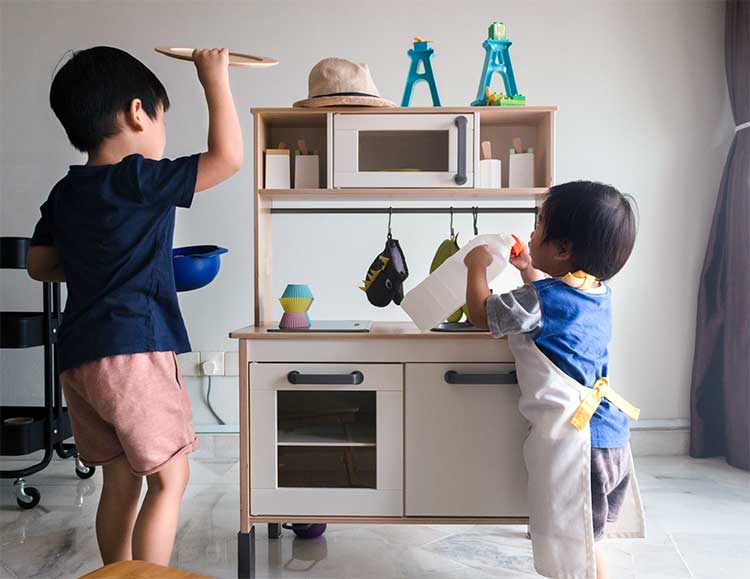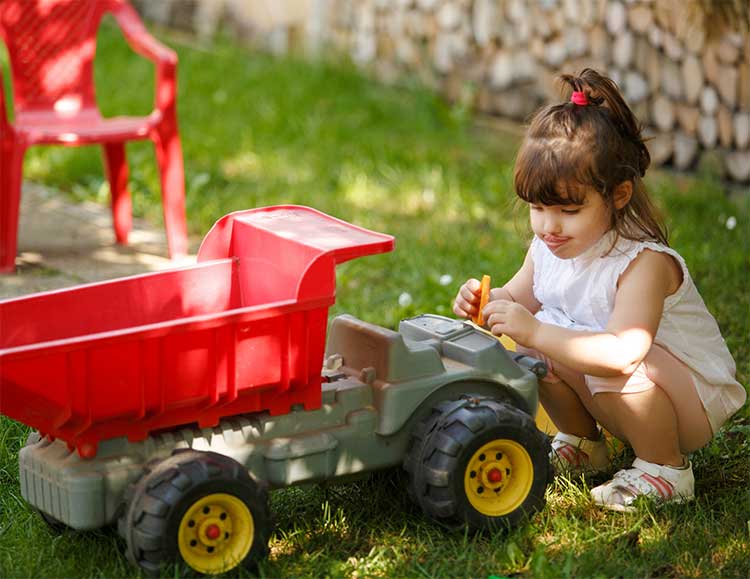Secure your Child's Spot in our Winter Camps! Click here!

What we're talking about!
Check back often for updates!

Recently I spoke about the importance of exposing both boys and girls to diverse toys and I had so many parents identify with it. So I decided to explore the topic a little more.
It all started with a wonderful conversation with a friend of mine who is a mother to two beautiful girls. She was very surprised to see that I had a toy kitchen in my house because I don’t have girls. I am raising boys. My boys love playing with the toy kitchen though. They write down recipes and then offer me plates loaded with plastic chicken legs, fake cheese and soft squishy broccoli made from fabrics.
I always thought, since I’m raising boys, I should pay extra attention to introducing my boys to toys that were traditionally considered for girls. In everyday life, I want to normalize the idea that tasks like household chores, fixing dinner or doing the dishes are as much a man’s responsibility as they are of a woman.
Someone in my conversation channel, rightfully mentioned, ‘We all gotta eat.’ So, why is a toy kitchen considered a girl’s toy
Because we are dealing with age old traditional biases based on gender norms. When it comes to making toy decisions for children, it is important to avoid gender biases. The biases that we carry through our lives most often begin at home during the early stages of a child’s life, and can be initiated through simple actions such as introducing them to a diverse range of toys and activities.
In my conversation with other fellow parents, I loved hearing when someone mentioned, ‘My boys play with dolls as well as trains’, or ‘My girl loves her trucks and her kitchen equally’.

Let’s first explore why it is critical to introduce children to diverse toys.
Firstly, toys play a significant role in a child's development and gender biases in toy choices can limit a child's potential and reinforce harmful stereotypes. For example, if a parent only buys their daughter dolls and dress-up clothes, they may inadvertently be sending the message that girls should only be interested in fashion and nurturing roles. Similarly, if a parent only buys their son trucks and action figures, they may be reinforcing the stereotype that boys should be interested in aggressive or adventurous activities.
Secondly, gender biases in toy choices can impact a child's self-esteem and confidence. If a child is consistently told that certain toys are "for boys" or "for girls," they may start to feel like they are not allowed to play with certain toys or pursue certain interests. This can lead to feelings of inadequacy or shame, which can ultimately impact their self-esteem and confidence. By providing children with a diverse range of toys and avoiding gender biases, we can help them to develop a positive sense of self and encourage them to pursue their interests and passions with confidence.
Thirdly, gender biases in toy choices can limit a child's future career aspirations. If a child is consistently given toys that are associated with certain gender roles or careers, they may start to internalize those messages and believe that certain careers are only meant for certain genders. By avoiding gender biases and providing children with a diverse range of toys, we can help them explore a wider range of interests, hobbies and career paths without the fear of being judged or limited by their gender.
As parents, caregivers, and educators, it is our responsibility to ensure that we are making toy decisions that promote healthy development and allow children to reach their full potential, regardless of their gender. Here are five ways to avoid gender biases while making toy decisions:
—-----------------------------------------—-----------------------------------------—------------------
When I am not teaching writing classes, I love having conversations about challenging gender equity, promoting diversity in ideas and raising the next generation of thinkers. Want to learn more about our story writing classes? Check us out here.
Help your kids fall in love with reading!
Need a list of amazing books to get your kids inspired about writing their own stories?
Grab your free copy by completing the form.
We'll email you the ebook!